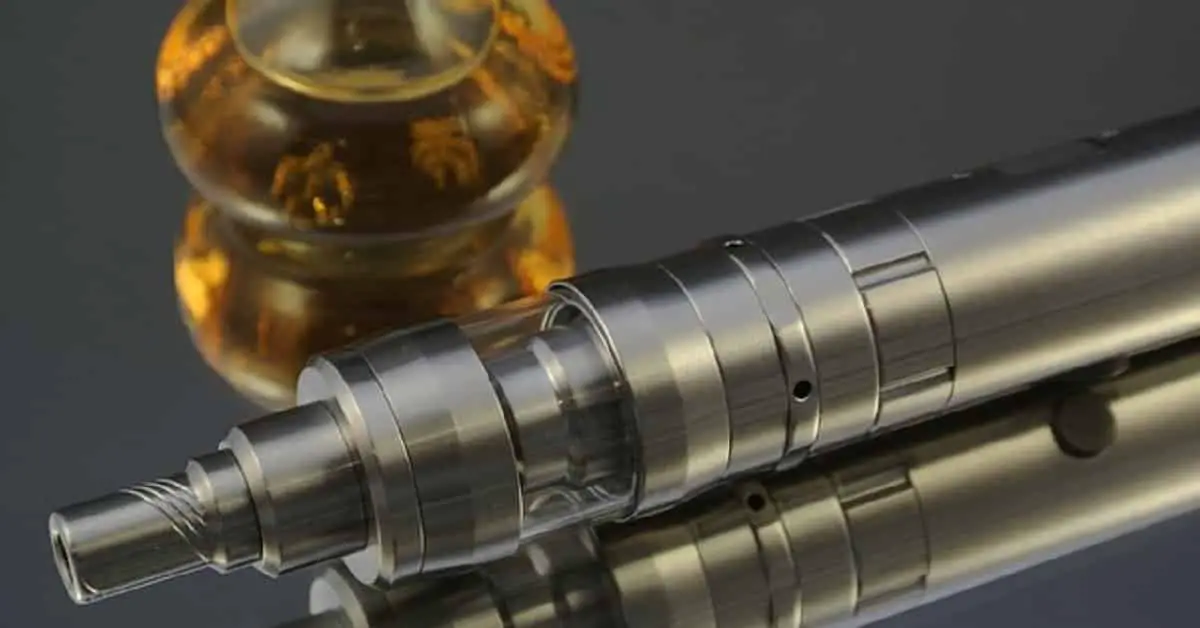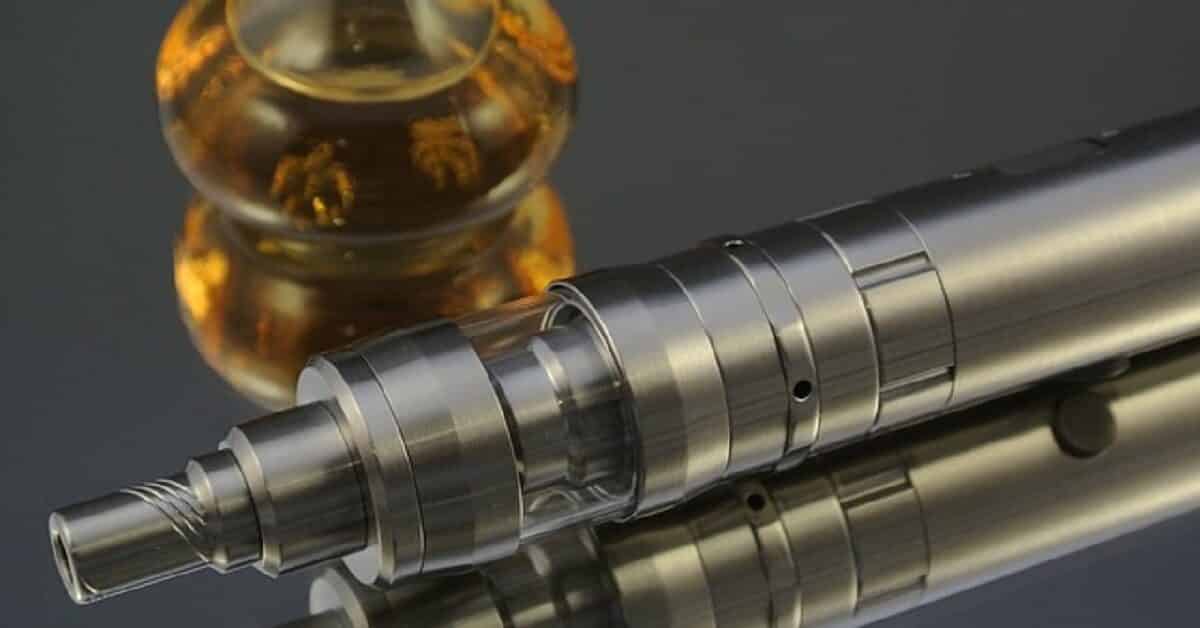
If you are counting calories to stay in shape, you may have been wondering: Does vaping have calories?
You may also want to know how many calories are in vape juice (read about calories in vape Juice here) or whether vaping makes you gain or lose weight (read: Does vaping make you lose or gain weight?).
This article answers all your questions about vaping, vape juice, and more (see the list of contents below).
Contents:
Does vape juice have calories?
How many calories are in vegetable glycerin (VG) and propylene glycol (PG)?
How many calories in vape juice?
–Estimates for users who mix by volume
–Estimates for users who mix by weight
Does vaping make you lose or gain weight?
Does vaping help you quit smoking?
Is vaping better than smoking cigarettes?
How many calories are in vegetable glycerin (VG)?
–Calculation: Calories in 1 ml of VG?
How many calories are in propylene glycol (PG)?
–Calculation: Calories in 1 ml of PG
Calculation: How many calories are in vape juice?
Calories in vape juice: By volume calculation
–Calculation: Weighted average for 80% VG/20% PG (by volume)
Calories in vape juice: Calculation by weight
–Calories in 100%VG vape juice (by weight)
Vaping is a recent trend among young people who have never smoked cigarettes.
Some use vapes as a cigarette substitute. They believe it helps quit smoking and reduces the risk of weight gain associated with smoking cessation.
Others believe vaping is less harmful to health.
Recent studies show that many adult e-cigarette users reported vaping to lose or control weight (Morean and Wedel, 2017).
However, experts have raised questions about claims that vaping is less harmful to health than regular cigarettes. Experts have also challenged claims that vaping helps quit smoking and prevents weight gain.
Disclaimer
This article is only for informational and educational purposes.
CARE healthy living does not recommend or promote vaping. We also do not promote the sale or use of e-cigarettes, vaping devices, and related products.
Although we sourced the information in this article from peer-reviewed studies published in reputable academic journals and other authoritative publications, it is not in place of professional medical advice.
We recommend you consult your healthcare professional if you have any questions about your health and e-cigarettes, vaping, and related products.
You may learn more about the health effects of vaping here.
What is vaping?
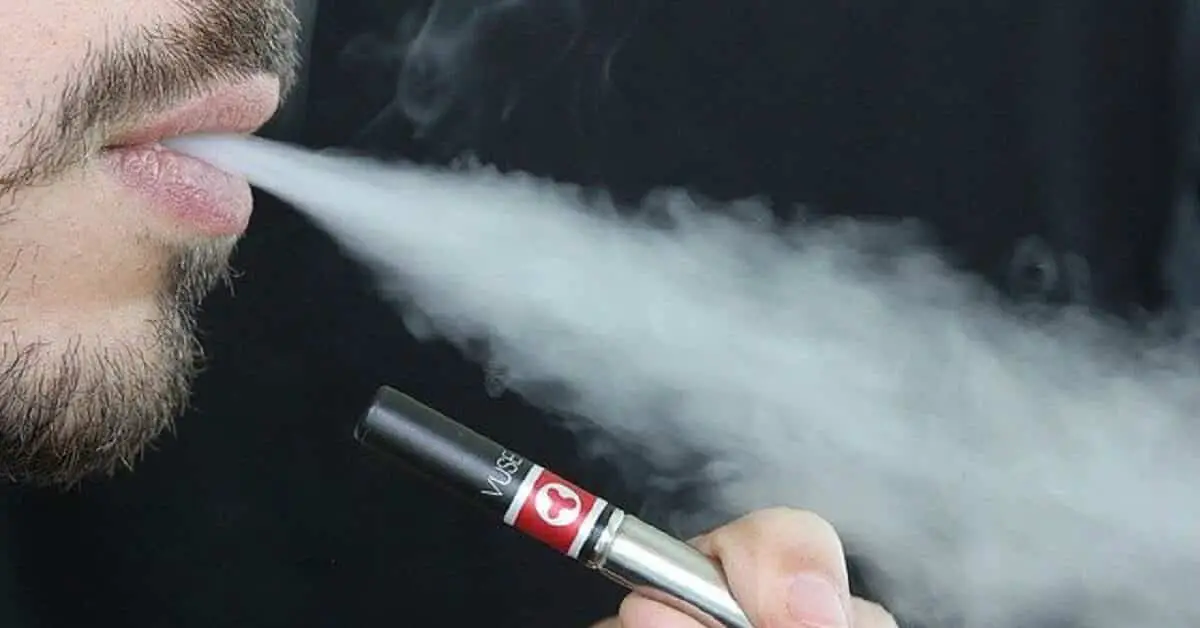
Vaping refers to inhaling the vapor generated by a vaping device or electronic cigarette (e-cigarette).
The essential difference between vaping and smoking is that smoking delivers nicotine to the system by burning tobacco to produce smoke.
The smoker absorbs the nicotine by inhaling the smoke.
However, a vaping device vaporizes a liquid preparation containing natural or synthetic nicotine.
Some vape juices contain freebase nicotine while others have nicotine salts.
The vaper then absorbs the nicotine by inhaling the vapor or aerosol.
Vapes or e-cigarettes
An electronic cigarette or e-cigarette is a vaping device powered by a battery. E-cigarettes are also known as vapes, vape pens, mods, e-hookahs, and electronic nicotine delivery systems (ENDS).
The Chinese pharmacist Hon Lik invented e-cigarettes in 2003. Vape devices have since grown in popularity.
Although some look like regular cigarettes, many look like fountain pens, cigars, pipes, and USB flash drives.
They are more convenient to carry than vape systems. They include a disposable pod or cartridge containing e-liquid or vape juice.
Vape systems also have a container, cartridge, or tank that holds vape juice (e-juice or e-liquid). The liquid gel contains nicotine, vegetable glycerin (VG), and propylene glycol (PG).
E-cigarettes include a heating element or atomizer that heats the e-liquid. When the liquid is heated, it atomizes or vaporizes without burning.
[Note: Some users also vape cannabis, various herb concentrates. Some even indulge in the dangerous practice of vaping alcohol solutions, including rubbing alcohol.]
However, some devices don’t use e-liquid. They heat tobacco without burning it until it vaporizes.
Aerosol
Vape aerosol (vaporized juice) also consists of water, nicotine, propylene glycol, and glycerin. Studies show that e-cigarette aerosol contains the same potentially carcinogenic substances found in cigarette mainstream smoke but at lower concentrations.
Vape systems allow users greater flexibility than e-cigarettes. Users may vary nicotine strength, e-juice flavors, and vaporizing heat. Some vapers also mix their vape juices based on their propriety blends.
Teenage vaping
Vaping is popular among teenagers and young adults. CDC reported that a survey in 2020 found that 19.6% of high school teenagers and 4.7% of middle school children reported currently using e-cigs.
A 2018 National Health Interview Survey found that 14.9% of U.S. adults reported ever using e-cigs in 2018, while 3.2% reported using them at the time of the survey.
The number of U.S. adults that were current users of e-cigarettes at the time of the survey was 8.1 million. The prevalence was highest among young male adults aged 18-24 years.
A 2021 National Youth Tobacco Survey also found that a tenth of high school students reported using e-cigarettes regularly.
Does vape juice have calories?
The answer is yes; vape juice contains calories. You can find out how many calories are in vape juice here.
E-liquid contains water, nicotine, and solvent carriers. Some e-liquids are nicotine-free.
The solvent carriers are propylene glycol (PG) and vegetable glycerin (VG).
PG and VG are the sources of calories in vape juice.
6 ml of vape juice contains only about 25-33 calories
The amount of vape juice that the average vaper consumes daily (4 ml-10 ml per day) is too small to add significantly to daily calories.
To illustrate, 6mls of vape juice contains only about 25-33 calories (read more about calories in vape juice here), less than half the calories in a small apple or a medium-sized hard-boiled egg.
In other words, you don’t need to worry that vaping will directly increase your daily calorie intake and make you gain weight.
If you are a vaper concerned about the health effects of vaping, increased calorie intake shouldn’t be your primary concern.
You should be more concerned about the potentially toxic effects of the aerosol.
You may learn more about the toxicity of vape juice aerosol here.
Does vaping have calories?
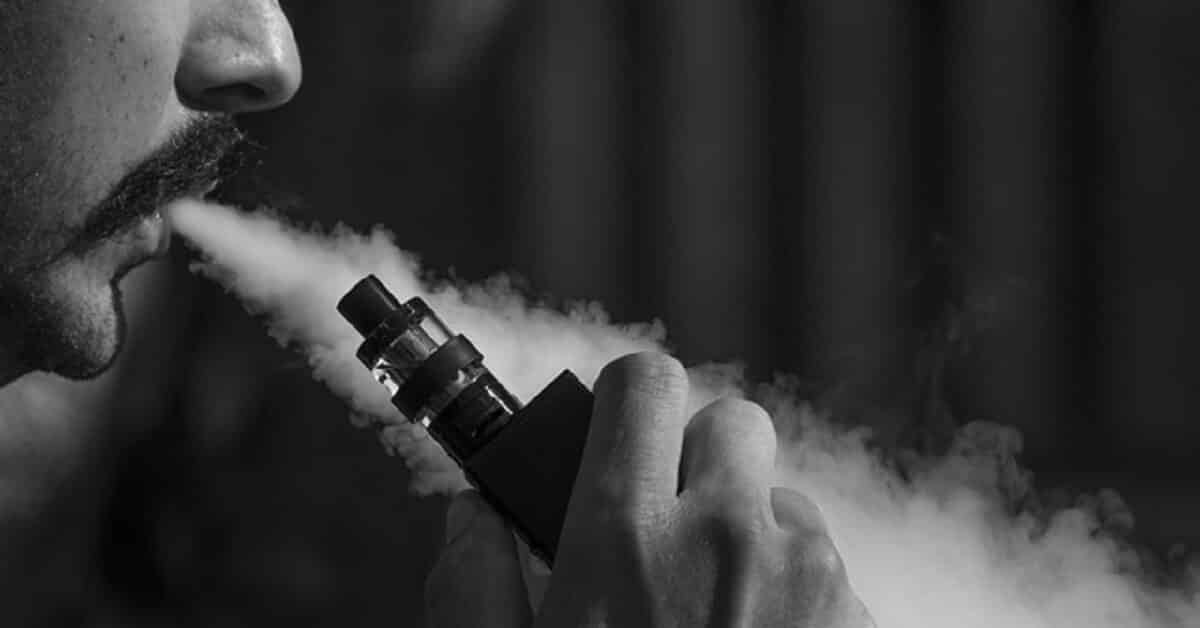
Although vape juice contains calories, you won’t get the calories by inhaling e-liquid aerosol. You can only get calories by drinking the vape juice.
But you shouldn’t drink vape juice because some components are potentially harmful to health, especially when consumed in large quantities.
How many calories are in VG and PG?
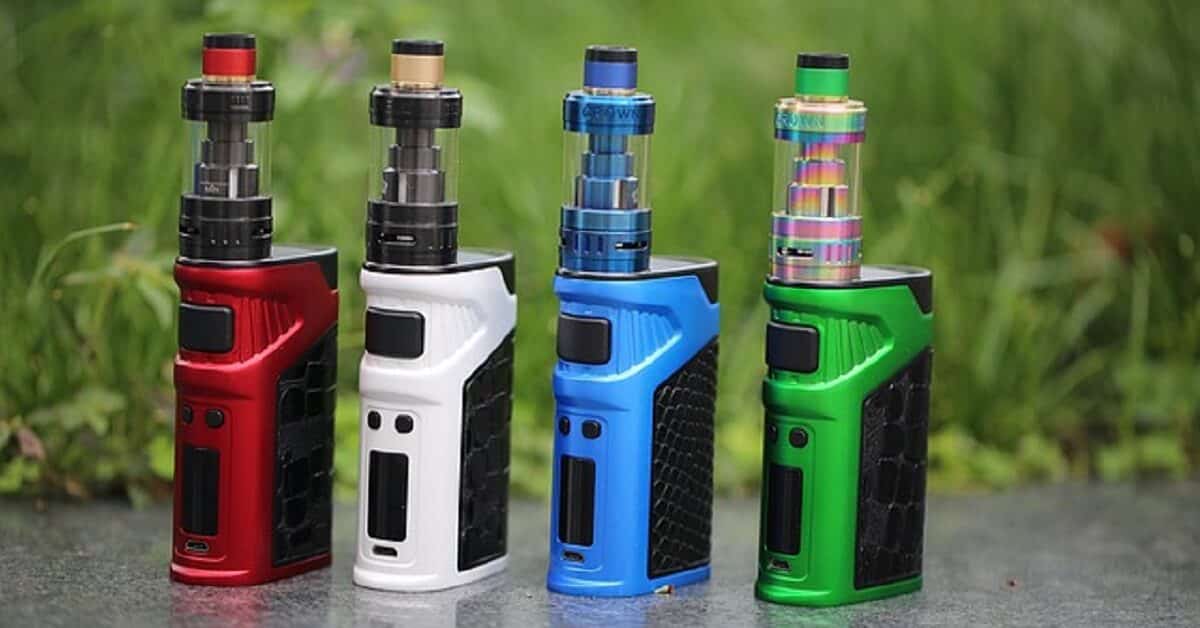
Vegetable glycerin (VG) and propylene glycol are two main components of vape juices.
USP grade vegetable glycerin or VG (purity >99.5%) contains 4.32 cal/g (see Freeeman et al., 2004). (Find out more about calories in glycerin).
USP grade (purity >99.5%) propylene glycol (PG) contains 4 cal/g, based on FDA recommendation for nutrition labeling purposes under 21CFR 101.9. (Find out more about calories in propylene glycol here).
Vegetable Glycerin
Glycerin (glycerol), one of the main components of e-liquid, is a type of carbohydrate known as trihydroxyalcohol (triol or polyol). Although they are also often referred to as sugar alcohols, they have a different structure than alcohols, such as ethanol.
Food manufacturers use glycerin as a food additive. It is also added to toothpastes as a humectant (moisture retainer or absorber).
It is metabolized in the liver and is a precursor in triacylglyceride and phospholipid synthesis.
Glycerin has low toxicity when ingested. But it is only safe when ingested in small quantities.
(Find more information about glycerin here).
We have no evidence that inhaling vaporized glycerin contributes to calories.
Propylene glycol
The other main constituent of vape juice that contains calories is propylene glycol (PG). You also won’t get any extra calories by inhaling vaporized PG, and you shouldn’t drink it.
Propylene glycol is generally safe when added to food products in small quantities. But consuming large amounts may have adverse health effects.
(Find more information about propylene glycol here)
The human digestive system can metabolize propylene glycol to lactic acid and pyruvate (a source of energy) in the liver (Zosel et al., 2010). But it is not recommended as a source of dietary energy due to its potential toxicity (Lim et al., 2014).
Propylene glycol overdose through ingestion of a medication that contains the compound as a diluent may cause lactic acidosis (potentially fatal lactic acid buildup in the bloodstream) (Zosel et al., 2010; Cunningham et al., 2015).
How many calories in vape juice?
Here is a summary of the calories in vape juice based on vegetable glycol(VG)/propylene glycol(PG) ratios.
Readers interested in finding out how we calculated the values may follow the respective links (see links in the section below) to the relevant subsections.
Estimates for users who mix by volume
Summary: For consumers who mix by volume, vape juice may have 4.16-5.45 cal/ml, depending on VG/PG ratio:
- 1 ml of vape juice containing 100% VG (equivalent to 1.262g of VG) may have up to 5.45 calories (see calculations here)
- 1 ml of vape juice containing 100% PG (equivalent to 1.04g of VG) may have up to 4.16 calories (see calculations here)
- 50% VG/50% PG may have up to 4.805 cal/ml (see calculations here)
- 80% VG/20% PG by volume may have up to 5.192 calories/ml (see calculations here)
- 70% VG/30% PG by volume may have up to 5.063 cal/ml
- 20% VG/80% PG by volume may have up to 4.418 calories/ml
Estimates for users who mix by weight
Summary: For consumers who mix by weight, vape juice may contain up to 4.00-4.32 calories/g depending on VG/PG ratio.
- 100% VG vape juice may contain up to 4.32 calories/g (see calculation here)
- 100% PG vape juice may contain up to 4.00 cal/g (see calculation here)
- 50% VG/50% PG e-liquid may contain up to 4.16 cal/g (see calculation here)
- 80% VG/20% PG e-liquid may contain up to 4.256 cal/g (see calculation here)
- 70% VG/30% PG vape juice may contain up to 4.224 calories/g
- 20% VG/80% PG e-liquid may contain up to 4.064 calories/g
Does vaping make you lose or gain weight?

No, vaping does not make you gain weight. Vaping also does not make you lose weight, but nicotine has been associated with lower body mass index (BMI).
Some studies suggested controversially that vaping nicotine may help prevent weight gain associated with smoking cessation. Studies also reported that many people started vaping to prevent weight gain after they quit smoking.
Singh and associates (2017) reported growing evidence that many vapers use e-cigarettes to help quit smoking and control weight gain.
Does nicotine promote weight loss?
Studies show that nicotine has appetite-suppressant (anorexic) effects and that nicotine users have lower average body mass index (BMI) than nonusers (Piirtola et al., 2018).
Smoking cessation has been linked with an increased risk of weight gain (Williamson and associates, 1991; Eisenberg and Quinn, 2006; Bush and associates, 2016).
Research studies also indicate that weight gain after smoking cessation may be associated with an increased risk of type 2 diabetes (Bush and associates, 2016.; Hu and associates., 2018)
According to Dobbie and associates (2020), weight gain is a risk factor associated with smoking relapse.
Many smokers are reluctant to quit smoking due to fear of weight gain (Dobbie and associates, 2020). Some are motivated to continue or return to smoking to prevent weight gain.
Does vaping increase smoking cessation?
Dobbie and associates (2020) reported that the use of e-cigarettes containing nicotine, as well as certain behavioral aspects of vaping (such as vaping as a snack or meal replacement), may increase smoking cessation and reduce the risk of weight gain.
Morean and Wedel (2017) reported that 13.5% of a sample of vapers reported they took up vaping to help them restrict calorie intake and lose or control weight.
Jackson and colleagues (2019) noted that many who wish to quit smoking are also concerned about weight gain. The researchers said that vaping may aid smoking cessation. E-cigarettes may also help people who want to quit smoking control their weight after they quit smoking.
However, the CDC reported that while some studies suggested that vaping increased smoking cessation, the evidence was not conclusive (see also Al-Hamdani and Manly, 2021).
According to the U.S. Preventive Services Task Force, there wasn’t enough evidence to recommend vaping as an aid for smoking cessation.
Thus, medical experts and health authorities, including the FDA, do not recommend the use of e-cigarettes for weight loss or as an aid to quitting smoking.
The best way to lose weight is through a weight loss diet and increasing your physical activity level. Young people may take up calorie-burning activities, such as skateboarding and trampolining.
Find out how many calories you need to eat to lose weight. You can learn more about how to lose weight here.
Does vaping help you quit smoking?

Many believe that vaping is less harmful than smoking cigarettes (Nutt et al., 2016). Thus, some people who want to quit smoking take up vaping to aid smoking cessation.
Some studies suggest that e-cigarette users have a higher rate of smoking cessation than cigarette smokers. Zhuang and associates (2016) found that long-term vaping was associated with a higher rate of smoking cessation.
In other words, it may be easier to quit vaping than smoking.
The U.S. Preventive Services Task Force concluded (see the previous section) that there wasn’t enough evidence to officially recommended vaping as a cigarette substitute to help smokers quit.
However, the CDC acknowledged that e-cigarettes may play a role as a substitute for cigarettes and that they may help people quit smoking.
The CDC cited a Cochrane Review that investigated the effectiveness of e-cigarettes in helping smokers quit the habit.
The review considered two randomized controlled trials that appeared to support claims that e-cigarettes with nicotine were more effective in helping adult smokers quit than e-cigarettes without nicotine.
The review concluded that more people may stop smoking for at least 6 months when using nicotine e-cigarettes than nicotine-free e-cigarettes or nicotine replacement therapy.
Nicotine e-cigarettes may also be more effective for smoking cessation than behavioral support and no support.
However, the review noted that the reliability of the results was limited by the small number of trials, small sample sizes, and wide margins of error regarding the estimates.
A CDC study also appeared to cast doubt on the effectiveness of e-cigs in people trying to stop smoking. The study found that many adults who started using e-cigarettes to quit smoking did not stop smoking.
Instead, they continued vaping alongside cigarette smoking (a practice known as “dual-use”).
You can learn more about how to quit smoking here.
Is vaping better than smoking cigarettes?

Vegetable glycerin (VG), propylene glycol (PG), water, and nicotine are the widely recognized constituents of vape juice or e-liquids.
However, researchers have identified more than100 different chemicals in several brands available on the market (Herrington and Myers, 2015; Kucharska et al., 2016).
According to Eaton and co-authors, the chemicals include tobacco-specific nitrosamines (TSNAs), alkaloids, aldehydes, metals, volatile organic compounds (VOCs), phenolic compounds, and polycyclic aromatic hydrocarbons (PAHs).
Many are potentially carcinogenic while others may cause heart and respiratory diseases.
Traboulsi and colleagues (2020) reported that many of the toxic substances in tobacco smoke have also been found in e-cigarette aerosol, although in lower amounts:
They include mainstream smoke gas-phase constituents, such as nitrogen (N2), oxygen (O2), carbon dioxide (CO2), carbon monoxide (CO), acetaldehyde, methane, hydrogen cyanide (HCN), nitric acid, acetone, acrolein, ammonia, methanol, hydrogen sulfide (H2S), hydrocarbons, nitrosamines, and carbonyl compounds.
They also include particle-phase carboxylic acids, phenols, nicotine, terpenoids, tobacco-specific nitrosamines (TSNAs), catechols, and polycyclic aromatic hydrocarbons (PAHs).
Is vaping less harmful than smoking?
The lower amounts of these toxic compounds in vape aerosols compared with mainstream smoke led some to conclude that vaping is less harmful to health than smoking (Nutt et al., 2016; Munzel et al., 2020).
But experts have questioned the claims that vaping may be better than smoking (Darabseh et al., 2020).
The National Academies of Science, Engineering, and Medicine concluded in a report published in 2018 that studies have confirmed that e-cigarettes are also associated with significant health risks.
Traboulsi and colleagues (2020) reported a lung condition termed Vaping Product Use Associated Lung Injury (EVALI) or “vape lung.”
The condition, characterized by shortness of breath, cough, and hypoxemia (low blood oxygen), was reportedly associated with the use of counterfeit or low-quality vaping products.
CDC reported more than 2800 cases of EVALI as of February 18, 2020, with 68 deaths. The health authorities said the EVALI cases may have been due to tetrahydrocannabinol (THC) or vitamin E acetate contamination.
Gray and colleagues (2020) identified the following toxic metals in vape aerosols: chromium, nickel, copper, zinc, cadmium, tin, and lead in liquid and aerosol (see also Pappas et al., 2020).
Sassano and co-workers (2018) reported that the PG and VG contents of e-liquids may be cytotoxic.
They also concluded that the toxicity of e-liquids was due to impurities, such as cinnamaldehyde and vanillin.
According to Ogunwale and associates (2017), e-cigarette aerosols contain aldehydes that may increase cardiovascular disease risk and noncancerous pulmonary disease.
E-liquids may also contain the weed killer acrolein that causes lung injury, COPD, asthma, and lung cancer (Bein and Leikauf, 2011).
The following are valuable resources for vapers who want to quit vaping or smoking:
How many calories are in vegetable glycerin (VG)?

Summary: Vegetable glycerin contains 4.32 cal/g (Freeman et al., 2004).
What is vegetable glycerin?
Glycerin (glycerol, 1,2,3-trihydroxypropane) is a polyol (sugar alcohol) compound widely used in food products.
It can be derived from animal or plant fats. Synthetic glycerol is also made from petrochemical products.
Glycerin (glycerol) made from plant fats is known as vegetable glycerin (VG).
VG is a clear, colorless, odorless, sweet-tasting syrupy liquid derived as a by-product of saponification (soap manufacturing process) and transesterification of fats. These involve heating triglyceride-rich plant oils, such as palm oils, coconut oils, and soybean oils under high pressure or with an alkali (lye).
Glycerin is about 60% to 75% as sweet as sugar.
Glycerin made from animal fat and vegetable glycerin (VG) has the same chemical properties.
It is used in pharmaceuticals, food, cosmetics, skincare, and oral care (toothpaste) products.
FDA classifies glycerin as a Generally Recognized As Safe (GRAS) food additive. The agency requires nutrition facts labels to include glycerin content of food products (in grams) as part of total sugar.
Glycerin contains about 4.32 kcal/g, according to Freeman and associates.
Jung and Batal (2011) reported that crude glycerin samples had mean gross energy (GE) content of about 4.6 kcal/g (4,648 kcal/kg), with samples ranging from 3.337 kcal/g to 6.742 kcal/g, depending on purity.
They also reported that the samples had mean metabolizable energy (TME) content of 4.2 kcal/g (4,206 kcal/kg), with samples ranging from 2.9kcal/g (2,950kcal/kg) to 6.7kcal/g (6,711 kcal/kg).
In a study published in the Journal of Animal Science, Kerr and associates (2009) reported that the gross energy (GE) content of US Pharmacopeia grade glycerin ( ≥99.5% pure) used for pharmaceutical and food purposes was 4.325 kcal/g, and metabolizable energy 3.682kcal/g.
The convention in nutrition science is to report energy content as metabolizable energy instead of gross energy (Fenton and Elmrayed, 2021). However, we shall go by the value of 4.32kcal/g based on FDA recommendations in 21 CFR 101.9, according to Freeman and colleagues.
Calculation: Calories in 1 ml of VG
- Water density= 0.997g/cm3 (approx. 1.00g/cm3);
- VG density=1.262g/cm3
- 1cm3=1ml
- 1 ml of glycerin weighs 1.262g (density = 1.262g/cm3)
- If 1 g of VG contains 4.32kcal
- Then 1.262g contains (1.262g*4.32) 5.45 calories.
- Thus, 1 ml of VG (equivalent to 1.262g) contains 5.45 calories.
How many calories are in propylene glycol (PG)?

Summary: Propylene glycol has an energy content of 4 calories/g, based on FDA recommendations under 21CFR 101.9.
What is propylene glycol?
Propylene glycol (1,2-dihydroxypropane or PG), is a colorless, odorless, and tasteless synthetic liquid widely used in pharmaceutical, cosmetic, skincare, and personal hygiene products, such as toothpastes.
Propylene glycol is also a polyol. It is an additive in packaged food products, solvent for food colorants, flavors, intravenous drug preparations, plastics, and paints.
It serves as a moisture absorber (humectant), anticaking, emulsifying, and texturizing agent that helps improve the flavor and shelflife of food products.
It is also used in antifreeze preparations.
The FDA classifies PG as a Generally Recognized As Safe (GRAS) food additive.
The WHO allows for a daily intake of not more than 25 mg/kg or 11.4 mg /lb of bodyweight (Lim et al., 2014).
It is a source of energy in animal feeds (Waldroup and Bowen, 1968; Persons et al., 1968).
Multiple sources reported that propylene glycol has a gross energy value of 5.66 cal/g (Bayley and associates, 1967; Zhang and colleagues, 2020)
The energy content of USP grade (purity >99.5%) propylene glycol is 4 cal/g, based on FDA recommendation in 21CFR 101.9.
Calculation: Calories in 1 ml of PG
- Water density= 0.997g/cm3 (approx. 1.00g/cm3).
- Propylene glycol density=1.04g/cm3
- 1cm3=1ml
- 1 ml of propylene glycol weighs 1.04g (density=1.036g/cm3)
- If 1g of PG contains 4.0 calories
- 1.04g contains (4×1.04) 4.16 calories
- That is, 1 ml of PG (equivalent to 1.04g) contains 4.16 calories
Calculation: How many calories are in vape juice?
To calculate the calories in vape juice, we first need to have an idea of its composition.
The calorie content of vape juice depends on the composition. The composition of any e-liquid in turn depends on the manufacturer.
Hahn and associates (2014) analyzed 54 samples of vape juice/e-liquids and reported the following compositions (see also Hutzler et al., 2014).
- Average nicotine content: 11 mg/ml (some samples that manufacturers claimed to be nicotine-free contained traces of the substance)
- Average glycerine/glycerol: 37 g/100 g
- Average propylene glycol: 57 g/100 g
- Average Ethylene glycol: 10 g/100 g) (Hutzler and associates (2014) reported that the presence of ethylene glycol was associated with increased toxicological hazards. Fortunately, most vape juices don’t contain ethylene glycol.)
Some samples contained the following:
- 1,3-propanediol (toxic)
- Thujone (potentially poisonous compound found in absinthe from Artemisia absinthium or Wormwood)
- Ethyl vanillin
Hutzler and colleagues (2014) identified the following potentially toxic and carcinogenic substances in some e-juice samples:
- Coumarin (hepatotoxic; carcinogenic)
- Acetamide (carcinogen)
Nicotine is optional but found in concentrations ranging up to 5%
3 mg/mL or 0.3% = very low
6 mg/mL or 0.6% = low
12 mg/mL or 1.2% = low-medium
18-24 mg/mL or 1.8% – 2.4% = medium-high
36 mg/mL or 3.6% and above = very high
Most vape juices are a blend of vegetable glycerin and propylene glycol. They are used as carrier liquids and usually constitute 90% or more of total vape juice constituents.
Users may choose their preferred blend. High VG blends are gentler on the throat and produce more vapor than high PG blends.
Below is a list of commonly used ratios:
- 80% VG/20% PG
- 70% VG/30% PG
- 50% VG/50% PG
- 20% VG/80% PG
- 100% VG (Max VG)
- 100% PG (Max PG)
Calories in vape juice: By volume calculation
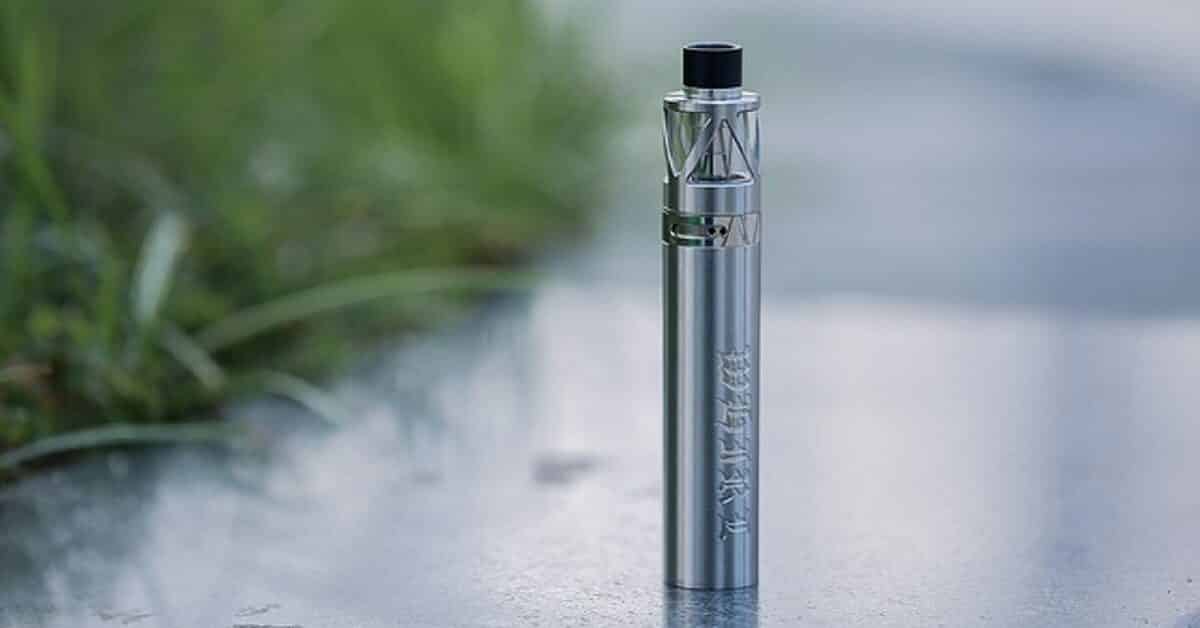
The calories in any sample of vape juice will depend on its composition.
The analysis by Hahn and associates (2014) supports the claim by many manufacturers that VG+PG typically constitutes at least 90% of the total content of e-liquid.
The other constituents (water and nicotine) make up 10% or less. They do not contribute a significant amount of calories.
[Note: Nicotine has a density of 1.010g/ml]
Thus, ignoring nicotine and other components — to simplify calculation — we may estimate the calorie content of vape juice:
[Please note that these estimates don’t take into account other constituents such as water, nicotine, and potentially harmful impurities. These constituents do not contribute significant calories but may be up to 10% of the volume or weight of vape juice. Accounting for these constituents dilutes calorie densities to the extent of their percent contribution.]
Summary: E-liquid contains approximately 4.16-5.45 calories/ml
- 1 ml of vape juice containing 100% VG (equivalent to 1.26g of VG) may have up to 5.45 calories: calculation: 1g of VG contains 4.32 cal; 1.262g (equivalent to 1 ml) contains 5.45 calories
- 1 ml of vape juice containing 100% PG (equivalent to 1.04g of VG) may have up to 4.16 cal: calculation: 1g of PG contains 4 cal; 1.04g (equivalent to 1ml) contains 4.16 cal
- Vape juice containing 50% VG/50% PG may have up to 4.805 cal/ml: calculation:[4.16(VG)+5.45(PG)]/2=4.805 calories/ml
- Vape juice containing 80% VG/20% PG may have up to 5.192 cal/ml (see weighted average calculation below)
- Vape juice containing 70% VG/30% PG may have up to 5.063 cal/ml
- Vape juice containing 20% VG/80% PG may have up to 4.418 cal/ml
Calculation: Weighted average for 80% VG/20% PG (by volume)
- VG: 5.45 x 8 = 43.60 cal
- PG: 4.16 x 2 = 8.32 cal
- Total (43.60+8.32)=51.92 cal
- Divided by 10 = 5.192 cal/ml
Calories in vape juice: Calculation by weight
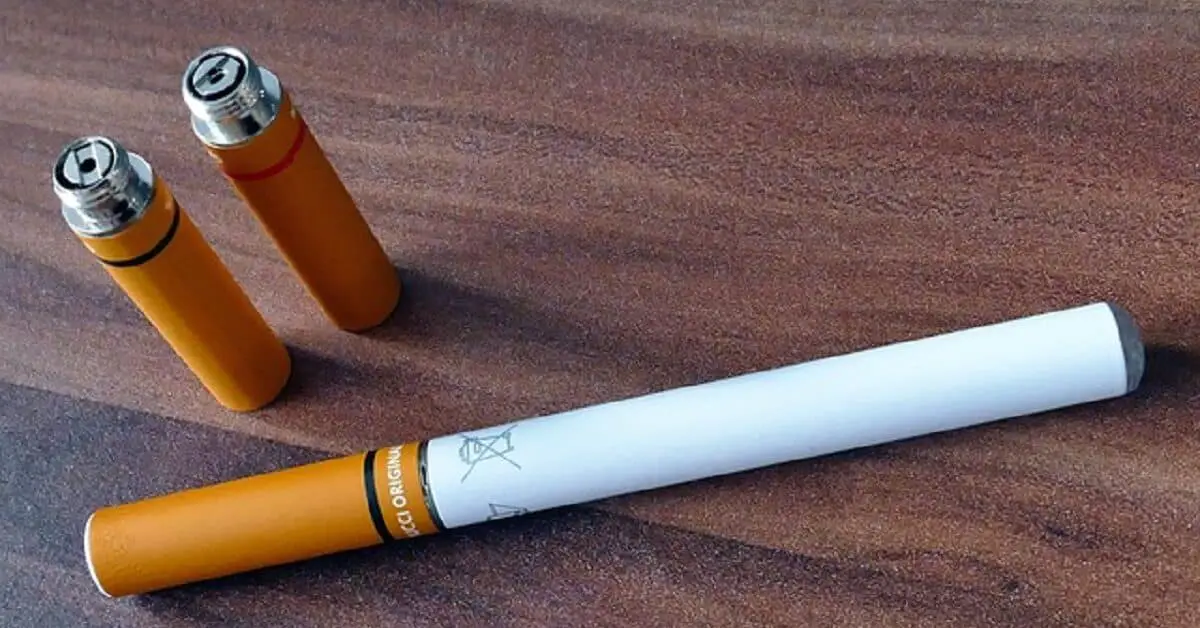
If you prefer to mix your vape juice by weight/mass, the following calculation applies:
Calories in 100%VG vape juice (by weight)
[Please note that these estimates don’t take into account other constituents such as water, nicotine, and potentially harmful impurities. These constituents do not contribute significant calories but may be up to 10% of the volume or weight of vape juice. Accounting for these constituents dilutes calorie densities to the extent of their percent contribution.]
- 1g (0.7924ml1) of 100% VG vape juice may contain up to 4.32 cal
1Calculation
- The density of VG=1.262g/cm3
- 1 cm3=1ml
- Thus, if 1.262g of VG is equivalent to 1ml
- 1g = (1/1.262) = 0.79240ml
100%PG vape juice (by weight)
- 1g (0.96154ml2) of 100% PG vape juice contains 4.00 cal
2Calculation
- The density of VG=1.04g/cm3
- 1 cm3=1ml
- Thus, if 1.04g of PG is equivalent to 1ml
- 1g = (1/1.04) = 0.96154ml
50%VG/50%PG by weight
- If 1g of VG contains 4.32 calories; then 50 grams (39.620ml3) contains 50×4.32= 216 cal
- If 1g of PG contains 4.00 calories; then 50 grams (48.077ml4) contains 50×4=200 cal
- 100g of 50% VG/50% PG vape juice contains (216+200)=416 cal
- 1g of 50% VG/50% PG vape juice contains (416/100) 4.16 cal
3Calculation
- If 1.262g of glycerin is equivalent to 1ml (density of VG=1.262g/cm3)
- 50g is equivalent to 39.620ml (50/1.262)
4Calculation
- If 1.04g of PG is equivalent to 1 ml (density of PG=1.04g/cm3)
- Then 50g is 48.077ml (50/1.04)
80%VG/20%PG by weight
- If 1g of VG contains 4.32 calories; then 80 grams (63.39ml5) contains 80×4.32= 345.6 calories
- If 1g of PG contains 4 calories; then 20 grams (19.23ml6) contains 20×4= 80 cal
- 100g of 80% VG/20% PG vape juice contains (345.6+80)=425.6 cal
- 1g of 80% VG/20% PG vape juice by weight contains (425.6/100) 4.256 cal
5Calculation
- If 1.262g of glycerin is equivalent to 1ml
- 80g is equivalent to 63.39ml (80/1.262)
6Calculation
- If 1.04g of PG is equivalent to 1 ml
- Then 20g is equivalent to 19.23ml (20/1.04)

